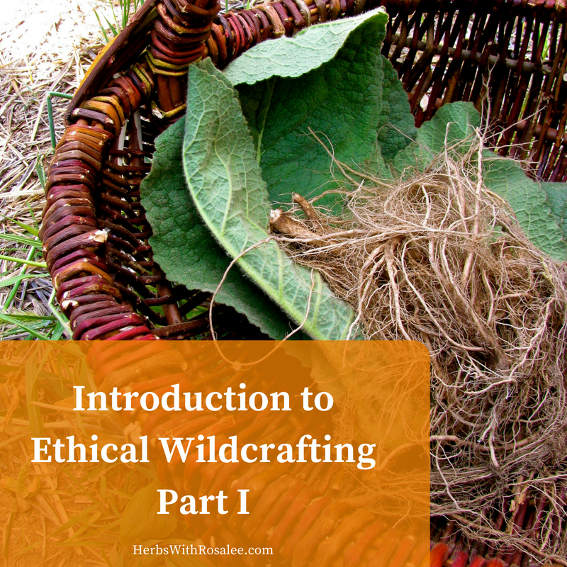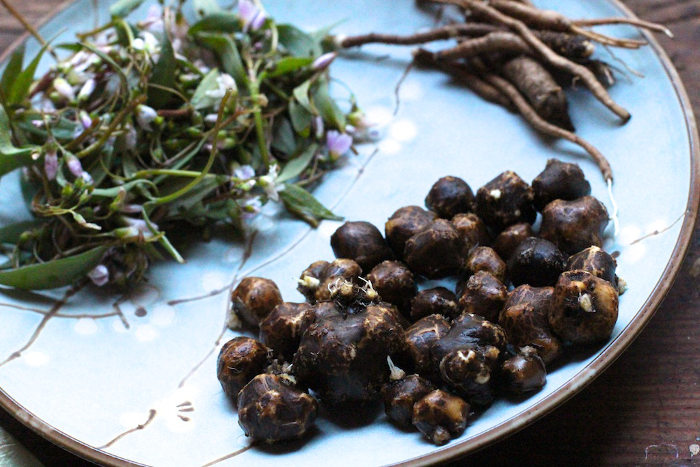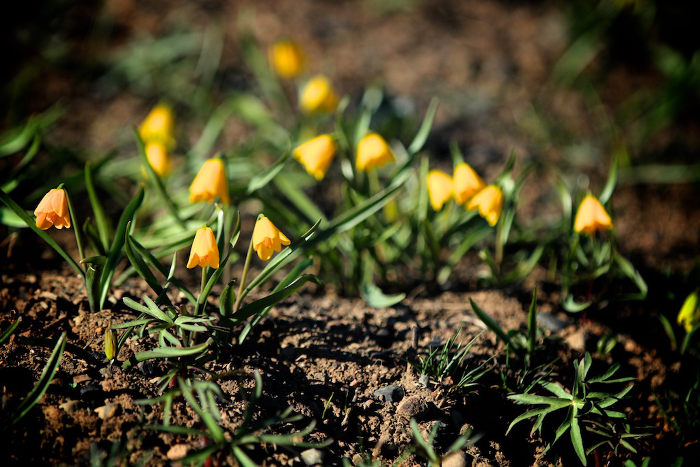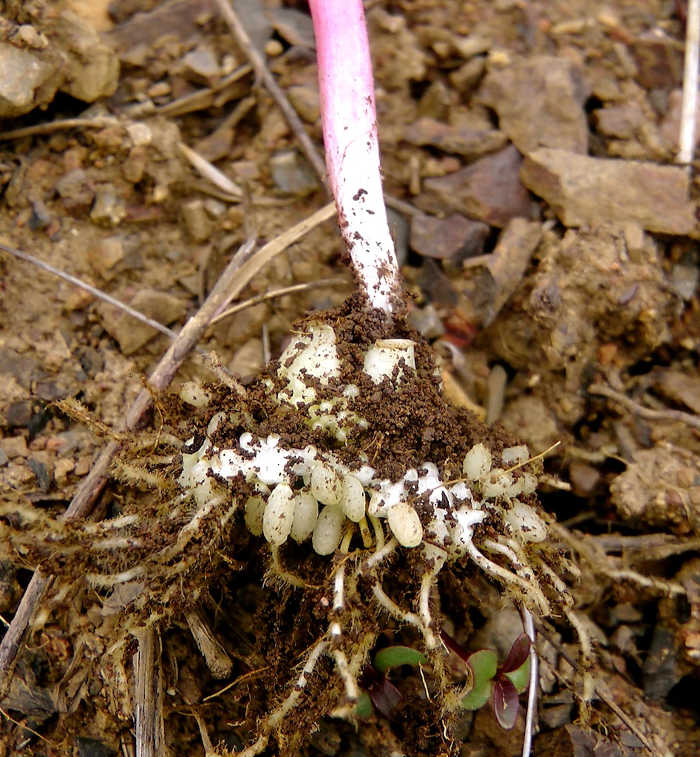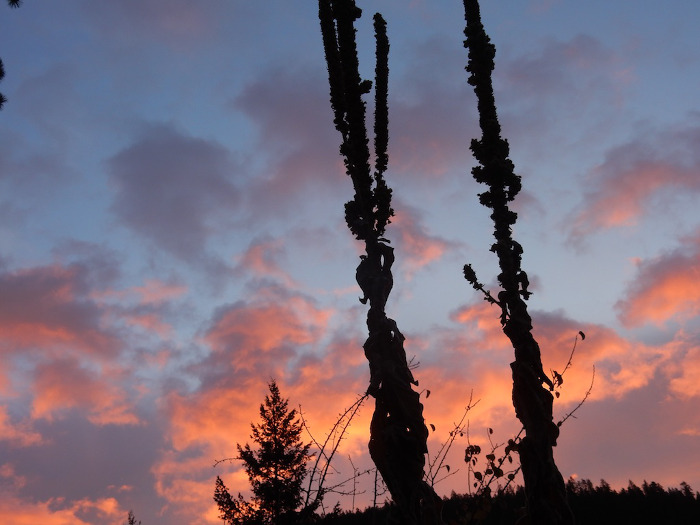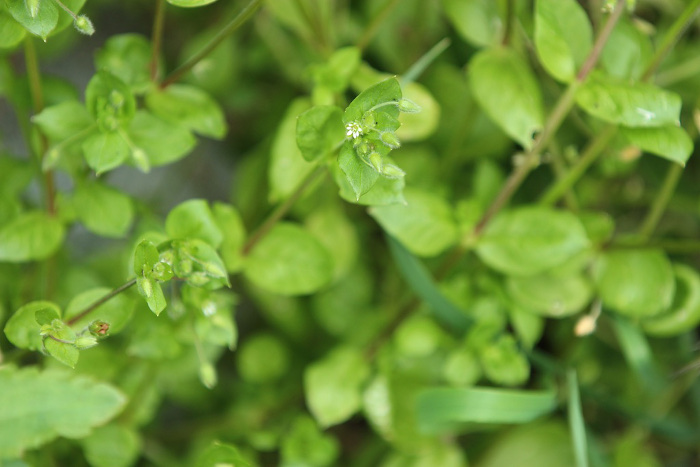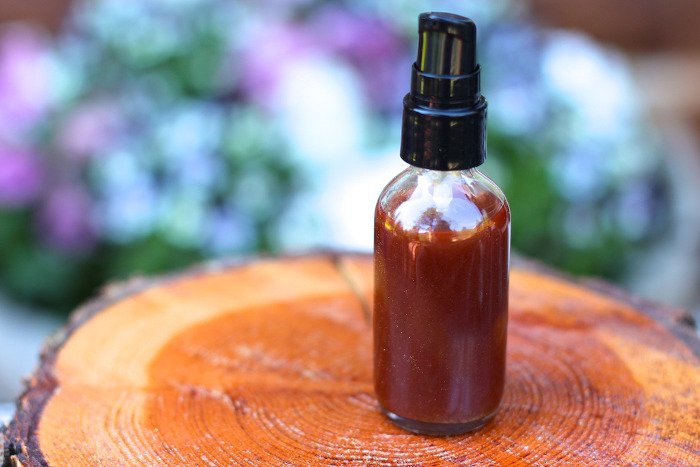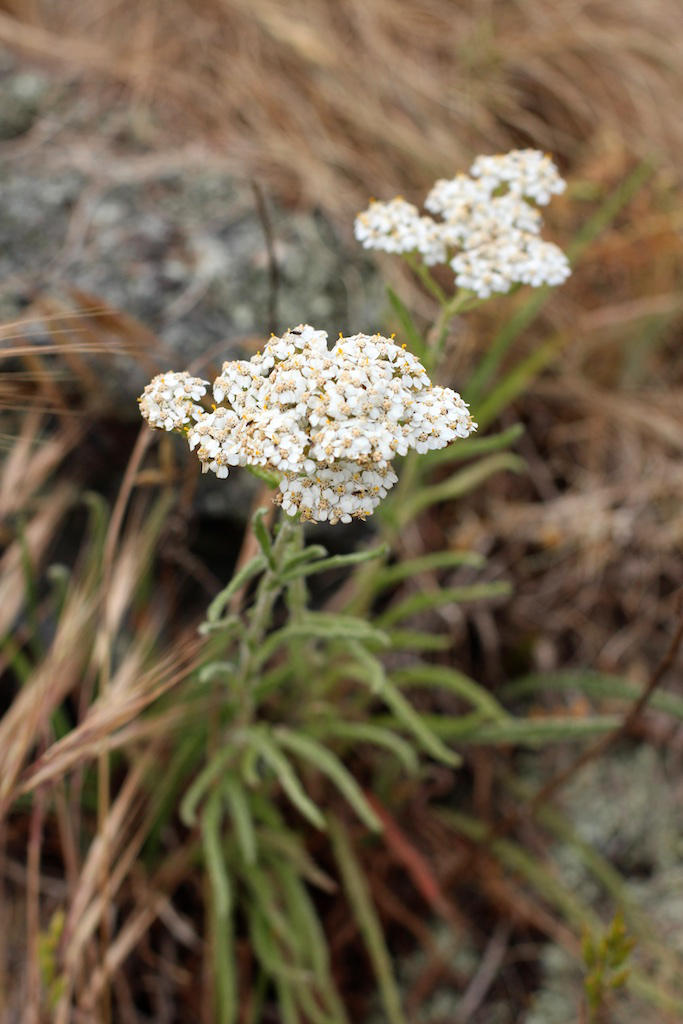Get weekly tips, recipes, and my Herbal Jumpstart e-course! Sign up for free today.

Wildcrafting Wild Plants: A Foraging Guide
Share this! |
|
If we choose to use plants as medicine, we then become accountable for the health of the wild gardens. We begin a co-creative partnership with the plants, giving back what we receive -- health, nourishment, beauty and protection. We have reached a time in history when ignoring this relationship with the resources we use would be disastrous.
Rosemary Gladstar,
Founder of United Plant Savers
As herbalists we are truly responsible for the health of the plants we harvest and use, including plants found in the wilderness and those growing in our neighborhoods. By learning how to wildcraft ethically we can be better stewards for the lands around us.
There are different perspectives in the modern world about how humans relate to their environment. Many people feel that the earth is ours to use without consideration for future generations. Others feel that the wilderness should remain “pure” and absolutely untouched by humans.
Neither viewpoint reflects an inherent understanding of the natural world and our place in it.
Wildcrafting Wild Plants and Awareness
Our ancestors had a strong connection to the earth around them. Because they relied on materials, animals, and plants taken from their immediate surroundings, they could not ignore how the health of the environment affected the health of the family.
The gadgets, gizmos, foods and building supplies of today still come from the earth, but now the cost is hidden from us. We flip the light switch without thought to the dams impeding our rivers and killing our salmon. We fill up our trash cans each week without having to face the ugly realities of landfills.
Inherent to the study of plants for medicine is the awareness of how our actions directly affect the health of this planet we call home. Wildcrafting plants for our food and medicine builds this awareness.
Wildcrafting Wild Plants: Over-harvesting and Under-harvesting
In North America we have lost very important medicinal plants to over-harvesting. Echinacea, goldenseal, and false unicorn root are but a few of the plants that are now only rarely found in the wild.
It is a less intuitive truth that under-harvesting of medicinal plants can also reduce plant populations.
When my husband and I moved to the Methow Valley in North Central Washington, we were thrilled at the wildcrafting possibilities. The Methow Valley used to be the home of the Methow people, who relied year-round on local plants and animals for food.
Since the area hadn’t been harvested in decades we thought the wild plant populations would be abundant. As we explored our valley more and more, we were surprised to find that the important edible plants seemed few and far between. How did people survive on the meager supply of plants?
My husband took these questions to heart and started studying the ethno-ecology of the region. This new realm of study offers insight into how wilderness can flourish with human involvement.
Yellow bells (Fritillaria pudica) is one of my favorite examples. Also called rice root, the bulb of this plant contains numerous rice-like plant bulblets. If these bulblets stay connected to the original bulb, they do not become a new plant. However, when separated and spread around they grow into new plants. Harvesting this plant can increase the amount of yellow bells in an area by 20-fold.
Likewise, sweet, juicy berries are a generous offering by our plant friends, but I am sure most of us are familiar with the underlying motivations of plants that produce berries. Berries are made to be eaten by a wide range of creatures, who spread the seeds far and wide after digestion.
So while humans can wreak havoc on the plant world by overharvesting or by overtaking plant habitats, the opposite can also be true. Our interactions with plants can also promote health and balance in the plant world.
Like people before us who lived closer to the earth, we can harvest plants with the end result being healthier, stronger plant populations.
If we use a plant respectfully, it will flourish. If we ignore it, it will go away. This is a theory generated from millennia of observations of plant response to harvest, subject to peer review by generations of practitioners from basket makers to herbalists.
- Robin Wall Kimmerer, Braiding Sweetgrass
Why Wildcrafting Wild Plants?
If you have never wildcrafted before, let me be the first to tell you--it can be hard work!
First you need to be able to correctly identify the plant. Then you need to locate the plant in a healthy ecosystem where you have permission to harvest. You need the correct set of tools for harvesting and the know-how to harvest the plant sustainably.
Then begins the hard work of harvesting. This can mean wading through marshes to get your cattail, braving thorns to get to your hawthorn berries, or scrambling up mountainsides to find elderberries. As a wildcrafter you will have to withstand the hot sun, incessant wind, bugs and other pests. Wildcrafting can mean stooping for hours to get enough violet flowers to fill a small jar, or laboring with all your might to dig burdock root from hard-packed rocky soil.
Once you’ve got the plants in hand, you are only half done! Plants will need to be taken home, cleaned and processed and then turned into food or medicine. Phew!
So, why would a sane person wildcraft?
Wildcrafting Wild Plants Can Increase the Health of Plants and their Ecosystems
We can increase the vitality of an area by interacting with it in a conscious way.
Aerating the soil, spreading seeds and pruning branches appropriately are very real ways in which we can tend the wild, creating stronger and healthier eco-systems.
We can also ensure the health of areas we visit regularly by speaking out on their behalf. For example, there is a patch near my home where many mullein plants spring forth each year. I can easily harvest leaves, roots, and flowers in just one visit. One year, on one of my foraging trips, I was devastated to find that the area had been sprayed with herbicide. I live quite a ways from people on a rough dirt road, so this really surprised me.
I contacted the neighbor who owned land nearby and explained what had happened and that I had been harvesting the plants there for medicine. This person was fascinated to learn that all those “harmful weeds” were actually helpful for ailments that he and his wife suffered from. He readily agreed to never spray there again.
There are many similar ways we can actively educate our communities about keeping our ecosystems healthy. Local public parks where children play are often needlessly sprayed with herbicides. You can help stop this--at the urging of citizens many public parks in the United States are adopting a chemical-free policy.
Wildcrafting Wild Plants is About Connection
By harvesting our own plants for food and for medicine we connect with the plants themselves, with the ecosystems our plants inhabit, and with the living forces of this earth.
Wildcrafting Wild Plants Teaches Us About the Plants
Visiting plants through the seasons, sitting with them, watching them shift, observing the land where they live, gives us a plethora of information we would never know by simply ordering them via the internet. I really doubt we can truly know the plants we take internally unless we know them as a living beings, whether they are in our gardens or on mountain slopes.
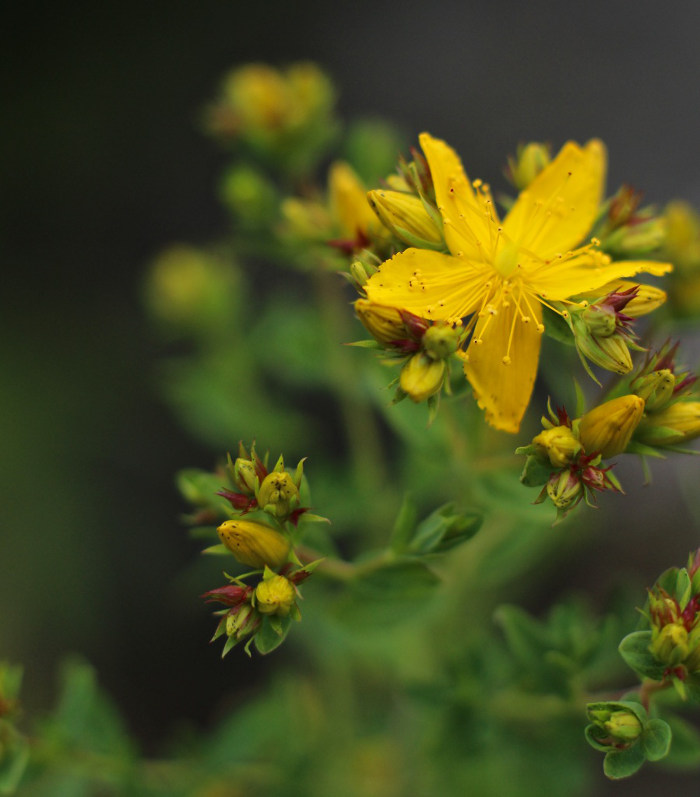 St. John’s Wort is a unique living being. Blooming around summer solstice, it has a special affinity for the sun, which adds to the complexity of its medicine. Crushing the fresh yellow flowers between your fingers will result in a dark red to purple stain. An astounding plant to get to know in person!
St. John’s Wort is a unique living being. Blooming around summer solstice, it has a special affinity for the sun, which adds to the complexity of its medicine. Crushing the fresh yellow flowers between your fingers will result in a dark red to purple stain. An astounding plant to get to know in person!Wildcrafting Wild Plants is Mostly Free
It will cost you your time and most likely some patience, but wildcrafting is otherwise very easy on the wallet: “Free” medicine and food outside your door!
Wildcrafting Wild Plants Gives Us a Healthy Diet
In the spring, when many people are craving fresh greens from their gardens, we are harvesting wild greens at least a month before local agricultural greens hit the market. We also eat a much larger variety of foods than is usually found in the produce department. Wild foods commonly have more nutrients in them than domestic foods raised using large-scale agriculture.
Wildcrafting Wild Plants Can Result in High-Quality Medicine
Just as eating fresh tomatoes from the garden is much more enjoyable than eating tomatoes which were picked green and then shipped from thousands of miles away, harvesting healthy plants and lovingly preparing them results in a high quality medicine.
Herbalist jim mcdonald writes about potent medicine-making in his article on wildcrafting.
Using medicines collected and created by your own hands is an experience entirely unlike using store-bought medicines and, I am convinced, the result is a much more potent remedy because of the personal relationship that is developed while making it. This is, of course, an entirely subjective experience and could not be proven "scientifically" (in fact, it could probably be disproven - "scientifically"), but based on my experience it is indisputable.
- jim mcdonald, Herbalist
Wildcrafting Wild Plants Can Be Empowering
Years ago I was traveling through the deserts of southern Utah when I got a urinary tract infection. Although I had an herbal first aid kit with me, nothing was very specific for this ailment.
I panicked.
Would I have to find a doctor? Was I going to have to stop the car every twenty minutes so that I could find a bathroom?
My fears subsided when I realized I was surrounded by many plants that were specific to bladder infections. I was able to fairly easily harvest juniper berries, yarrow flowers, and manzanita leaves. I was better within hours of making a tea from these powerful plants. In fact, after chewing on just a few juniper berries I was almost immediately better.
A deep sense of empowerment comes with wildcrafting. It means looking out onto the forest, meadow, or even the southwest desert, and knowing that the plants contained there can help us when we are ill and feed us when we are hungry.
Continue to Part II of this Ethical Wildcrafting Series by clicking here.

Rosalee is an herbalist and author of the bestselling book Alchemy of Herbs: Transform Everyday Ingredients Into Foods & Remedies That Healand co-author of the bestselling book Wild Remedies: How to Forage Healing Foods and Craft Your Own Herbal Medicine. She's a registered herbalist with the American Herbalist Guild and has taught thousands of students through her online courses. Read about how Rosalee went from having a terminal illness to being a bestselling author in her full story here.
